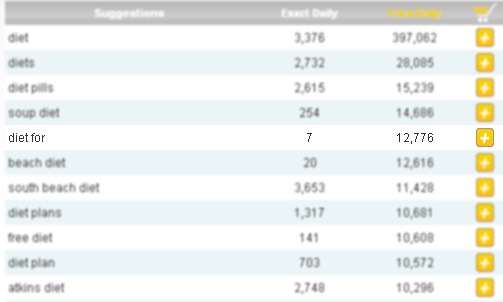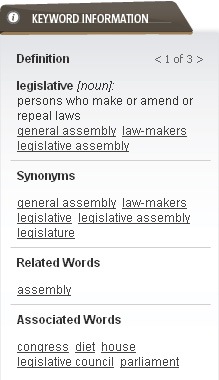- This week in search 5/14/10
- WiFi data collection: An update
- Announcing the Google Model Your Town Competition winner
- Nexus One changes in availability
| This is one of a regular series of posts on search experience updates. Look for the label This week in search and subscribe to the series. - Ed. This week, we announced a number of new search enhancements. Google Translate learns and speaks new languages This week, we launched 5 new "alpha" languages on Google Translate — Armenian, Azerbaijani, Basque, Georgian and Urdu. We also extended our support for spoken translations to 29 more languages. With these launches, you can now translate text, webpages and documents between 57 languages, and hear translations spoken in 36 languages. For many search queries where you want to translate a word or a phrase, we offer a translation powered by Google Translate directly in our search results. We also recently added romanization to this feature — when translating to or from a foreign language, you can now see the translation written phonetically in roman characters. Example searches: [translate how are you? to chinese] or [translate обезьяна] Twenty more languages in Google search get virtual keyboard Recently, we announced that we've integrated virtual keyboards into Google Search homepages in 35 languages. Virtual keyboard lets you type directly in your local language script in an easy and consistent manner, no matter where you are or what computer you're using. Feedback is always important to us, and we were excited to get more than three thousand votes for other languages you felt the keyboard should be launched in. Today, we're happy to announce that we are adding Virtual Keyboard to another 20 languages — making it now available in 55 languages. For those of you who speak a language we don't yet support, we're hard at work adding the virtual keyboard into more languages listed in Google Language Tools page. You can also vote for the languages you'd like us to add next. We always appreciate your feedback as we continue our efforts to help you input text in your desired languages as easily as possible. Example languages we added this week:
This week, we introduced a new feature that brings the technology of Google Squared right to your search results. Squared makes it easier to highlight answers for fact-based queries, so you can get more accurate answers, faster. Now, you'll see these answers right at the top of your search results, brought to you from across the web. And, we've also made sure this feature works great on mobile browsers. Example searches: [timezone in nevada] or [when was jean-jacques rousseau born] Thanks for reading, and stay tuned next week for more search news. |
Posted: 14 May 2010 01:44 PM PDT Nine days ago the data protection authority (DPA) in Hamburg, Germany asked to audit the WiFi data that our Street View cars collect for use in location-based products like Google Maps for mobile, which enables people to find local restaurants or get directions. His request prompted us to re-examine everything we have been collecting, and during our review we discovered that a statement made in a blog post on April 27 was incorrect. In that blog post, and in a technical note sent to data protection authorities the same day, we said that while Google did collect publicly broadcast SSID information (the WiFi network name) and MAC addresses (the unique number given to a device like a WiFi router) using Street View cars, we did not collect payload data (information sent over the network). But it's now clear that we have been mistakenly collecting samples of payload data from open (i.e. non-password-protected) WiFi networks, even though we never used that data in any Google products. However, we will typically have collected only fragments of payload data because: our cars are on the move; someone would need to be using the network as a car passed by; and our in-car WiFi equipment automatically changes channels roughly five times a second. In addition, we did not collect information traveling over secure, password-protected WiFi networks. So how did this happen? Quite simply, it was a mistake. In 2006 an engineer working on an experimental WiFi project wrote a piece of code that sampled all categories of publicly broadcast WiFi data. A year later, when our mobile team started a project to collect basic WiFi network data like SSID information and MAC addresses using Google's Street View cars, they included that code in their software—although the project leaders did not want, and had no intention of using, payload data. As soon as we became aware of this problem, we grounded our Street View cars and segregated the data on our network, which we then disconnected to make it inaccessible. We want to delete this data as soon as possible, and are currently reaching out to regulators in the relevant countries about how to quickly dispose of it. Maintaining people's trust is crucial to everything we do, and in this case we fell short. So we will be:
This incident highlights just how publicly accessible open, non-password-protected WiFi networks are today. Earlier this year, we encrypted Gmail for all our users, and next week we will start offering an encrypted version of Google Search. For other services users can check that pages are encrypted by looking to see whether the URL begins with "https", rather than just "http"; browsers will generally show a lock icon when the connection is secure. For more information about how to password-protect your network, read this. The engineering team at Google works hard to earn your trust—and we are acutely aware that we failed badly here. We are profoundly sorry for this error and are determined to learn all the lessons we can from our mistake. |
Posted: 14 May 2010 10:45 AM PDT Back in December 2009, we announced the Google Model Your Town Competition and invited towns to submit 3D models of their community. The public reviewed 3D models, explored the buildings in Google Earth and watched videos from five finalist towns around the world. We've tallied the votes and we'd like to congratulate our 2010 winning town: Barranco - Lima, Peru! Jorge De Albertis Bettocchi, a 38 year-old corporate business attorney, modeled the Barranco District of Lima. He entered the competition to generate pride among his fellow citizens and created his 3D models to serve as a tool for tourism, promotion, investment and preservation of Barranco's historic architecture. We'll be awarding the local school district with US$10,000 and the SketchUp team is planning a visit to Barranco later this summer. Visit the Google Earth Gallery to download a 3D tour of Barranco, Peru. Thanks to all those who voted to help us find the winning town. And thanks to all the modelers out there who submitted entries — we hope you'll continue to add 3D buildings to Google Earth! |
Posted: 14 May 2010 11:29 AM PDT We launched Nexus One in January with two goals in mind: to introduce a beacon of innovation among Android handsets, and to make it quick and easy for people to buy an Android phone. We're very happy with the adoption of Android in general, and the innovation delivered through Nexus One. Already, a lot of the innovation that went into creating Nexus One has found its way into numerous Android handsets, like the HTC Evo 4G from Sprint and the Verizon Droid Incredible by HTC. But, as with every innovation, some parts worked better than others. While the global adoption of the Android platform has exceeded our expectations, the web store has not. It's remained a niche channel for early adopters, but it's clear that many customers like a hands-on experience before buying a phone, and they also want a wide range of service plans to chose from. So today we're announcing the following changes: More retail availability. As we make Nexus One available in more countries we'll follow the same model we've adopted in Europe, where we're working with partners to offer Nexus One to consumers through existing retail channels. We'll shift to a similar model globally. From retail to viewing. Once we have increased the availability of Nexus One devices in stores, we'll stop selling handsets via the web store, and will instead use it as an online store window to showcase a variety of Android phones available globally. Innovation requires constant iteration. We believe that the changes we're announcing today will help get more phones to more people quicker, which is good for the entire Android ecosystem: users, partners and also Google. |





